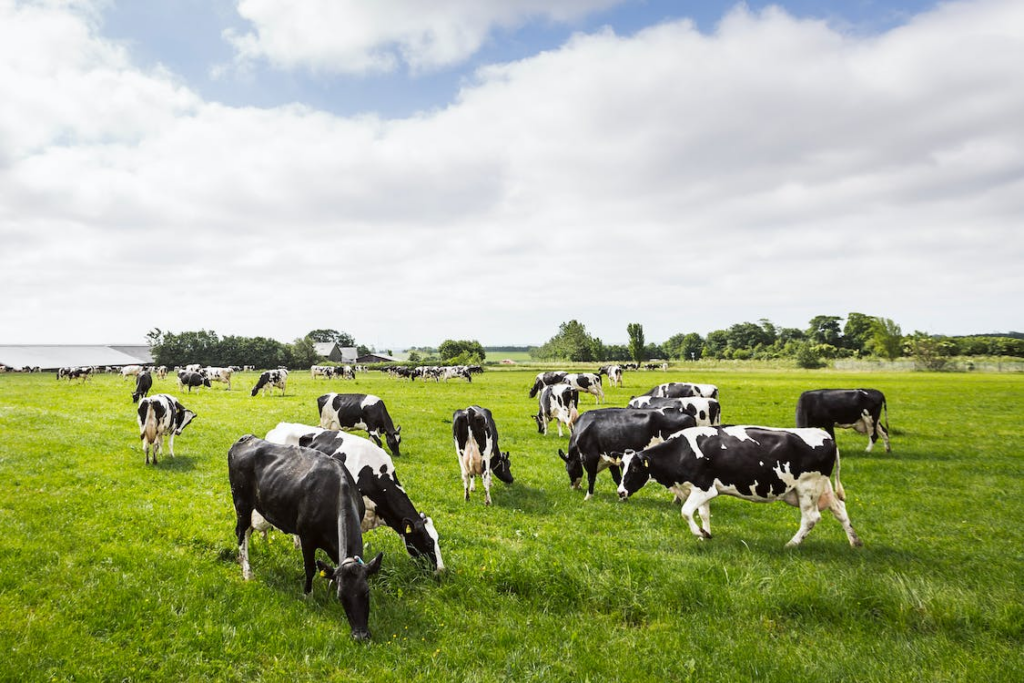Agricultural Best Management Practices (BMPs)
BMPs are structural and agronomic methods that have been determined to be the most effective, practical means of preventing or reducing sediment and nutrient pollution from farm operations.
BCCD and NRCS staff are available to work with landowners and operators to help identify areas of concern. Once identified, staff will discuss possible BMP solutions, as well as prepare engineered designs as needed. During the construction phase, staff will provide quality assurance to ensure proper installation of BMPs.
Structural BMPs
Manure Storage Facility (Solid & Liquid)
A concrete or lined earthen structure to temporarily store manure and barnyard runoff until crop conditions allow for spreading.
Animal Mortality Facility
An on-farm facility for the treatment or disposal of animal carcasses due to routine mortality

Heavy Use Area Protection
Stabilization or protection of an intensively used area by livestock.
Underground Outlet
A conduit or system of conduits installed beneath the ground surface to convey surface water to a suitable outlet.
Diversion
A channel constructed across the slope to intercept and divert surface water away from farmsteads, agricultural waste systems, and other improvements.
Grass Waterway
A shaped and graded vegetated channel established to reduce gully erosion and/or convey runoff from terraces, diversions, or other areas of water concentrations to a stable outlet.
Terrace
An earth embankment constructed across the field slope to intercept runoff water and reduce erosion. Gradient terraces outlet to waterways or diversions. Pipe-outlet terraces are graded to a riser pipe and outlet below the crop field.
High Tunnel System
An enclosed polyethylene, polycarbonate, plastic, or fabric covered structure that is used to cover and protect crops from sun, wind, excessive rainfall, or cold, to extend the growing season in an environmentally safe manner.
Lined Waterway or Outlet
A waterway or protected outlet section having an erosion-resistant lining of concrete, stone, synthetic turf reinforcement fabrics, or other permanent material.
Stream Crossing
A stabilized area or structure constructed across a stream to provide controlled access for people, livestock, equipment, or vehicles.
Trails and Walkways
A travel lane to provide livestock with a stabilized walking surface to reduce erosion, provide access to forage, and improve grazing distribution.

Water and Sediment Control Basin
An earth embankment or a combination ridge and channel constructed across the slope of a minor drainageway.
Streambank Protection
Vegetation, structures, and/or cutting of the stream-bank to stabilize the banks from scour and erosion, and maintain or increase flow capacity.
Streambank Fencing
Fencing installed along a stream to limit livestock access to streams or riparian areas.
Riparian Buffers
Area of grass, trees and/or shrubs adjacent to streams, ponds, and wetlands. Increased vegetative cover creates shade to lower water temperatures and improves riparian habitat for wildlife, while also reducing excess amounts of sediment, organic material, nutrients and pesticides reaching the water body.

Management BMPs
Nutrient Management
Manage rate, source, placement, and timing of plant nutrients and soil amendments while reducing environmental impacts.
No-Till
Planting crops directly into prior crop residues or cover crop with minimal or no tillage, to increase soil quality and surface residue, reduce sheet and rill erosion, and increase plant-available moisture
Cover Crop
Crops including close-growing grasses, legumes, and small grains grown to provide ground cover when crop residues have been removed and winter soil protection is needed to reduce sheet and rill erosion.
Contour Farming
Performing tillage, planting, and other farming operations on or as close to the contour as practical to reduce sheet and rill erosion, to reduce transport of sediment, and other waterborne contaminants.
Contour Orchard and Other Perennial Crops
Planting orchards, vineyards, or other perennial crops so that all cultural operations are done on or near the contour.
Alley Cropping
Trees or shrubs are planted in sets of single or multiple rows with agronomic, horticultural crops or forages produced in the alleys between the sets of woody plants that produce additional products.
Conservation Crop Rotation
Growing crops in a planned rotation for bio-diversity, plant pest management, and to provide adequate amounts of organic material to reduce sheet and rill erosion and balance plant nutrients.
Conservation Cover
Establishing and maintaining permanent vegetative cover
Field Border
A strip of permanent vegetation established at the edge or around the perimeter of a field.
Forage Harvest Management
The timely cutting and removal of forages as hay, green-chop, or ensilage.
Prescribed Grazing
Managing grazing or browsing animals in order to improve the health and vigor of the pasture’s forage stand. Stocking rates, size of animals, resting periods, and seasonal changes all impact the conditions of a pasture.

Stripcropping
Growing crops in contoured strips so that protective strips of grass or close growing crops are alternated with strips of row crops.
